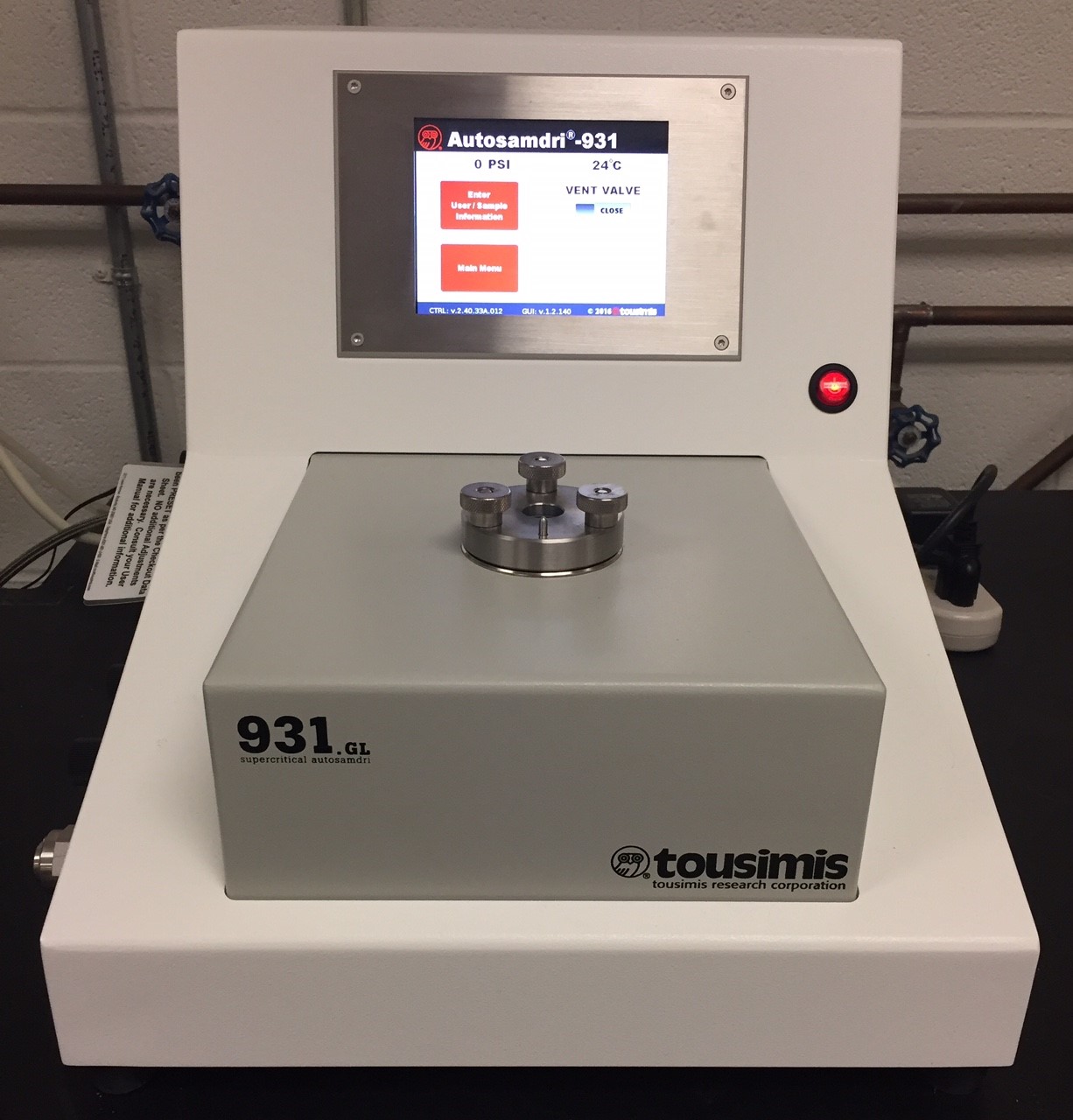IMC
Tousimis 931GL Critical Point Dryer
What is critical point drying (CPD)?
Biological samples for scanning electron microscopy (SEM) must be very dry and conductive. To this end, fixed and alcohol dehydrated samples must be thoroughly dried by CPD and then, coated with a conductive metal prior to introduction into the high vacuum chamber of the SEM.
Drying methods, other than CPD, such as evaporation, alter the surface topography of the sample. The primary cause of such damage is changes in surface tension, which generates considerable forces as the liquid evaporates from the surface boundary.
CPD reduces surface tension boundary distortions of biological tissue and is therefore the method of choice to dry biological samples for SEM observations. This method is based on the phase transitions during the liquefaction of gases. When the 'critical point' of temperature and pressure is reached during such transition, it is possible to pass from liquid to gas without any abrupt change in state, thereby avoiding the damaging effects of surface tension on the sample morphology.
How does the 931GL achieve CPD?
At heart of the 931GL is a pressure-resistant sample chamber that can be hermetically sealed with knurl nuts. The first step of the operation is to open the chamber, fill it in with 200 proof ethanol, immerse the sample into the ethanol and seal the chamber. Liquid CO2 is then introduced into the chamber and the temperature and pressure of the chamber are then controlled in a series of heat and purge operations that eventually result in critical point drying of the sample.
NOTE: All 931GL CPD users must be trained by dedicated IMC personnel before using the 931GL independently.

